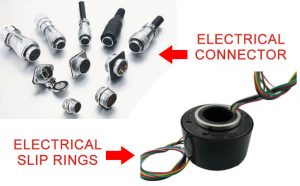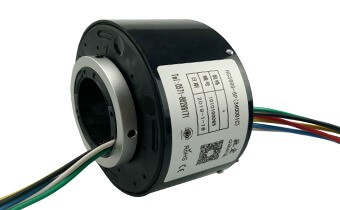The rotating electrical connection and the electrical slip ring have similar fundamental functions. The distinction is in the operational procedure. Brushless slip rings are also known as a rotating electrical connections.
Nomenclature
It can also be called a mercury slip ring in some situations. Because they lack the typical contact mechanism, they have this moniker. The transmission process is through with the help of a liquid metal, which is frequently mercury. As a result, whirling electricity is also known as mercury slip rings.
Purpose
Rotary electrical connections are in high-speed transmission and current transfer devices. Since the rotary electrical connections are feasible, they maintain a high rotating speed. In rotating electrical connections, the inclusion of a liquid metal route for conductance and transmission indicates low resistance, electrical noise, and vibration. Furthermore, decreases the amount of friction in the absence of a sliding contact mechanism. As a result, monitor the wear of critical components. As a result, the requirement for frequent maintenance is out of the question.

Difference Between the Slip Ring and Electrical Connector
The design components of the two slip ring forms differ significantly. The amount of functionality varies between the two scenarios. Rotary electrical connections are picked generally over standard electrical manifolds. This is because the electrical connector incorporates liquid metal transmission in comparison to the typical sliding contact mechanism. Rotary electric is appropriate for high-speed signal transmission, and data transfer in equipment such as thermocouples, welding machines, and packing machines. Furthermore, rotating electrical connections have applications such as hot rollers, textile equipment, and semiconductor items.
Mercury’s usage as a liquid metal transmission agent has also limited the use of rotating electrical connections. For example, because of the inadequacies of metallic mercury, it cannot be necessary for food processing equipment. The electrical slip ring takes over since it can carry out the working process effectively without jeopardizing the output’s integrity in such criteria. Furthermore, the revolving electrical connector does not carry high power signals, and power signal transmission is inherent outside the competency of such connectors. As a result, equipment that requires continuous high-frequency power and signal transmission contains an electrical slip ring in conjunction with other types of slip rings as needed.
Advantages of Slip Rings
- They ensure low resistance and continuity in signal transmission and a vital reduction in electrical noise. Furthermore, resistance and electrical noise can be enhanced if necessary by altering the materials.
- They are simple to install and provide a lot of versatility in the installation procedure.
- Place them into practically any equipment due to their independent construction. And do not take up much room due to their tiny size.
- Because they employ fiber brushes and precious metal conducting rings, they require minimum maintenance. If a part wears out, it may change without the entire system.
Conclusion
As technology advances, so does the need for new technology to oversee and propel industrial progress. Need a similar principle in slip ring technology. The evolution of slip rings has been enormous, from the basic slip rings to heavy-duty and high-maintenance slip rings, including new fiber slip rings, Ethernet slip rings, capsule slip rings, brooch connections, and many others. When it comes to the usage of slip rings, the market provides a wide range of devices that may adapt to various industrial demands.
See What We Can Do

